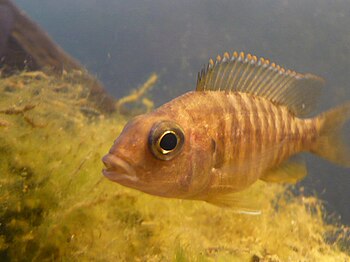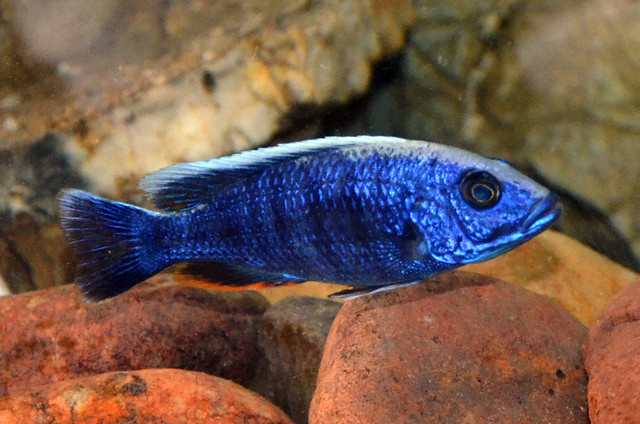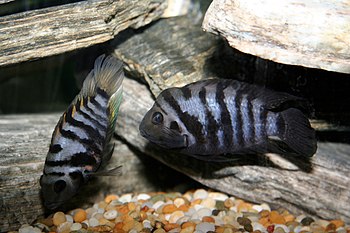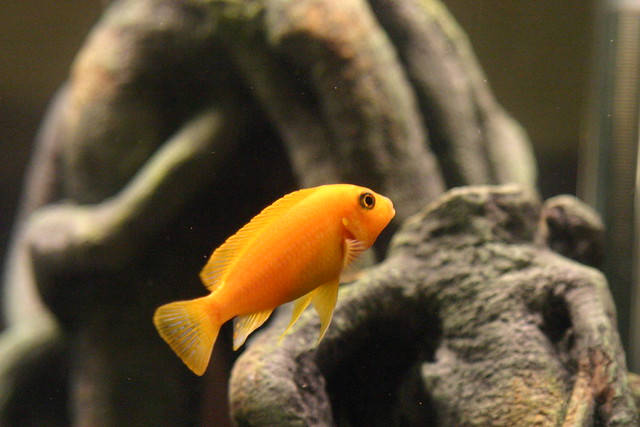 |
| "Aulonocara hansbaenschi RB2". Licensed under CC BY-SA 3.0 via Commons. |
So why choose Peacock Cichlids as your cichlid of choice? The Malawi Peacocks, since these cichlids originate from Lake Malawi, grow from 5-6 inches upon maturity. They thrive on a variety of food, ranging from small crustaceans such as shrimps and snails to insects such as mosquitoes and insect larvae. They also eat lettuce and peas.
They can be fed with either fresh or frozen foods and accept commercially available flakes or pellets. It is advised to serve them food only once to twice a day. Furthermore, be cautious of placing small fishes in the same aquarium with them because they can easily fit in their mouths and most likely to be eaten.
Aside from the accessibility of their food, they generally have a mild temperament and in most cases undemanding. They can adapt well to community-type aquariums. Even though they are likely to be territorial, they are non-aggressive and peaceful. It is advised that they are kept with other medium-sized non-aggressive cichlids.
With regard to their habitat requirement, the Peacock Cichlids are advised to be kept in aquariums that are arranged similar to their natural habitat. Be sure to provide open spaces for them to swim around as well as lots of caves and crevices where they can hide, rest, and create territories. Use sand as a substrate since they are likely to dig through the substrate after every feeding. Male cichlids also burrow through the sand prior to spawning. Using gravel or rocks, especially the sharp-edged ones, are likely to harm your Malawi Peacocks in doing this.
In terms of breeding, as long as you've provided hiding places for them, your aquarium is clean and the water requirements are acceptable, the Peacock Cichlids will do the rest themselves. They are considered ovophile mouthbrooders. The females do not eat during the incubation period, thus becoming weak and easily stressed. Such is the case that you should be ready to isolate the pregnant female two weeks after knowing she is pregnant. This will give time for the hatching of the eggs which will take four to seven days.
The female will release a number of eggs on the rocky bottom of the aquarium. Remove the mother from the tank within four days of the eggs hatching since she might eat the babies thinking it was her food. Be sure to put to feed the mother before bringing her back with other fish since she might starve to death once the breeding process continues over again. Keep the babies in a small separate tank feeding them with fine-ground flakes until they are big enough to be moved to a bigger tank.
The Peacock Cichlids are generally lovely fish to raise and cultivate. Their beauty, ease of care, few dietary concerns, adaptability to their environment, and undemanding demeanor has made them an interesting variety of cichlid to own. It is highly recommended that you try to experience the joy of watching these beautiful fish in your aquarium and see the value that this article is talking about.
|














